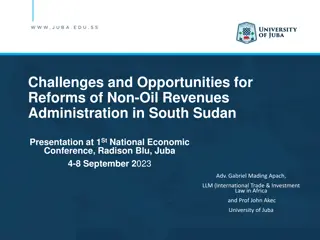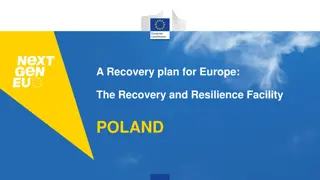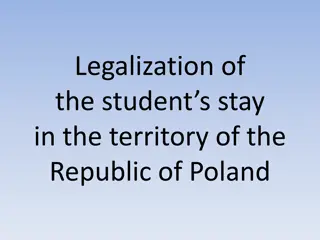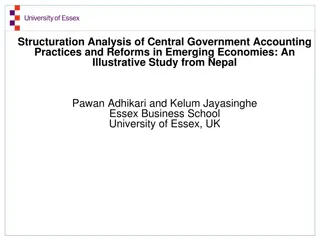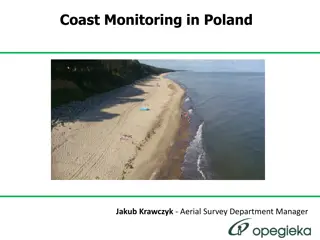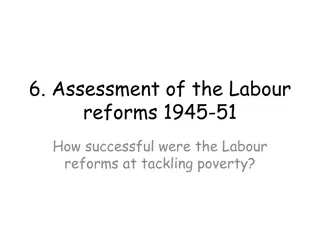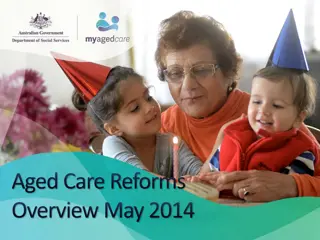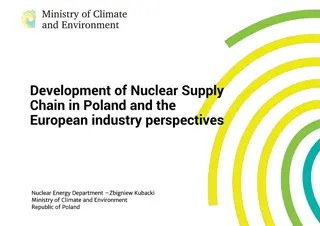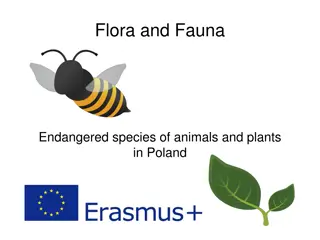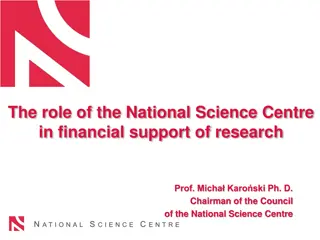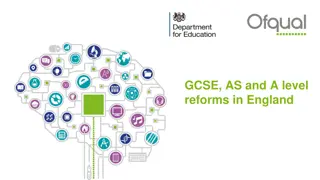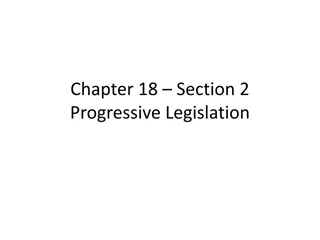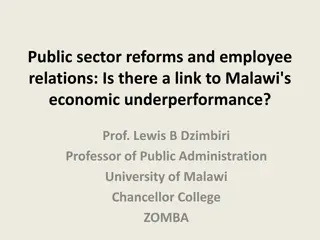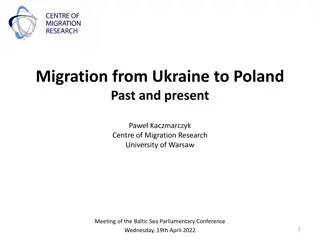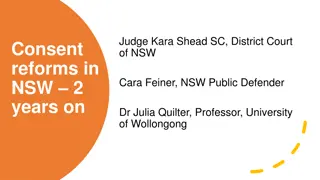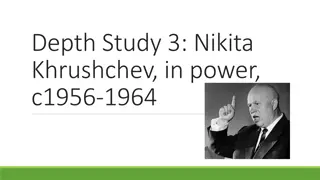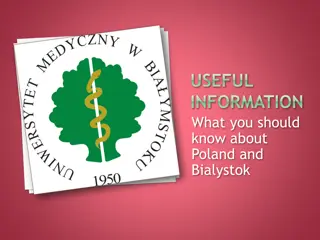Educational Reforms in Poland: Enhancing Learning Opportunities
The educational landscape in Poland has undergone significant structural reforms in recent years, focusing on compulsory education and introducing new structures in primary, secondary general, vocational, and technical secondary schools. The reforms aim to motivate young Europeans and improve the quality of education through innovative practices. From the mandatory full-time and part-time education to the changes in primary and secondary school structures, the Polish education system reflects a commitment to preparing students for higher education and vocational paths. Explore the evolving educational framework in Poland and its impact on students' academic journeys.
Download Presentation

Please find below an Image/Link to download the presentation.
The content on the website is provided AS IS for your information and personal use only. It may not be sold, licensed, or shared on other websites without obtaining consent from the author.If you encounter any issues during the download, it is possible that the publisher has removed the file from their server.
You are allowed to download the files provided on this website for personal or commercial use, subject to the condition that they are used lawfully. All files are the property of their respective owners.
The content on the website is provided AS IS for your information and personal use only. It may not be sold, licensed, or shared on other websites without obtaining consent from the author.
E N D
Presentation Transcript
EDUCATION IN POLAND Motivating Young Europeans 01.10.2017 - 30.09.2019 Project number: 2017-1-DE02-KA202-004129 Key action: Cooperation for innovation and the exchange of good practices Author: Agata Gazda
STRUCTURAL REFORM IN 2017 The educational reform in Poland takes place on the basis of an act of 14 December 2016 Law on School Education and an act Legislation introducing the Act Law on School Education . It sets out changes in the educational system to be implemented between the beginning of 2017 and the school year 2022/2023.
COMPULSORY EDUCATION THERE ARE TWO TERMS DEFINED IN POLISH EDUCATION SYSTEM: Full-time compulsory education (obligation to attend primary school new structure) applies to pupils 7-15 in the new structure. Part-time compulsory education (obligation to be in education) concerns pupils aged 15-18 in the new structure and it may take place either in school settings (a student attends an upper secondary school) or in non-school settings (e.g. a student follows vocational training offered by employers).
PRIMARY SCHOOL NEW STRUCTURE 8 YEAR PRIMARY SCHOOL is compulsory for all pupils who are usually aged 7-15. After 8 years of education pupils have to take an external examination. They can continue their education in one of three types of schools.
PRIMARY SCHOOL NEW STRUCTURE
SECONDARY GENERAL SCHOOL NEW STRUCTURE from September 2019 Learning in SECONDARY GENERAL SCHOOL lasts 4 years. Following the graduation students may take final Matura Exam which gives them access to HIGHER EDUCATION. SECONDARY GENERAL EDUCATION MATURA EXAMINATION HIGHER EDUCATION
VOCATIONAL EDUCATION NEW STRUCTURE from September 2019 and 2020
TECHNICAL SECONDARY SCHOOL NEW STRUCTURE from September 2019 TECHNICAL SECONDARY SCHOOLS have a 5-year curriculum. TECHNICAL SECONDARY SCHOOL MATURA EXAMINATION HIGHER EDUCATION VOCATIONAL EXAMS Students take exams confirming vocational qualifications in a given occupation during the course of study or upon completion of school to receive a diploma confirming their vocational qualifications. Following the graduation students may take final Matura Exam which gives them access to HIGHER EDUCATION.
SECTORAL VET SCHOOLS NEW STRUCTURE from September 2020 VET = Vocational Education and Training MATURA CERTIFICATE access to Higher Education OR POST SECONDARY SCHOOL 3 YEAR SECTORAL VET SCHOOL (STAGE I) 2 YEAR SECTORAL VET SCHOOL (STAGE II) VOCATIONAL EXAMS
VOCATIONAL EDUCATION NEW STRUCTURE from September 2019 and 2020 Students of vocational schools: Technical Secondary Schools and Sectoral VET Schools may take exams confirming vocational qualifications in a given occupation during the course of study or upon completion of school to receive a diploma confirming their vocational qualifications. Graduates of Technical Secondary Schools and Sectoral VET Schools (stage II) may take the external secondary school leaving examination to obtain the Matura certificate, which gives access to higher education.
VOCATIONAL EDUCATION NEW STRUCTURE from September 2019 and 2020 The direction of the current reform aims at promoting employers' co- operation with schools, especially to organize practical training in real working conditions. In the new system students of Technical Secondary Schools will be provided with 4-7 week traineeship in different companies and institutions, depending on the profession they are trained in.
POST SECONDARY SCHOOL NEW STRUCTURE Post-secondary schools are intended for graduates of all secondary schools who wish to obtain a diploma confirming their vocational qualifications. The schools offer courses lasting from 1 to 2.5 years.
HIGHER EDUCATION NEW STRUCTURE
HIGHER EDUCATION NEW STRUCTURE There are two types of Higher Education Institutions (HEI s): university-type non-university-type They both offer first- and second-cycle programmes as well as long-cycle programmes, while only university-type HEIs can offer third-cycle programmes (doctoral studies) and are authorized to award doctoral degrees. Studies are organized in the form of full-time or part-time programmes.
HIGHER EDUCATION NEW STRUCTURE First-cycle programmes First-cycle programmes lead to two types of degrees: Bachelor s degree of Art - BA 3-4 year programmes, Bachelor s degree of Science (Engineer) BSc (Eng) 3.5-4 year programmes.
HIGHER EDUCATION NEW STRUCTURE Second-cycle programmes Holders of the Bachelor s degree can enter second-cycle programmes, which take 1.5-2 years depending on the area of study, and obtain Master s degree. Only several fields of study offer long-cycle Master s degree programmes that last for 4-6 years. First-cycle, second-cycle and long-cycle Master s programmes end with a diploma examination and students who have passed it are granted a relevant degree.
HIGHER EDUCATION NEW STRUCTURE Third-cycle programmes The Master s degree entitles its holder to practice a given profession and provides access to third-cycle studies PhD (doctoral studies). They are organised in HEIs or research and development institutions other than HEIs and last for 3-4 years.
REFERENCES: http://eurydice.org.pl/2017/11/16/struktury-europejskich-systemow-edukacji-201718/ http://eurydice.org.pl/wp-content/uploads/2017/11/Structures_2017_18_diagrams-1.pdf https://www.researchgate.net/publication/318983179_ESPN_Flash_Report_201738_-_Poland_- _Changes_in_the_education_system_in_Poland http://eurydice.org.pl/wp-content/uploads/2017/10/Education-System-in- Poland_2017_2018_EN.pdf https://ec.europa.eu/education/sites/education/files/monitor2017-pl_en.pdf
This project has been funded with support from the European Commission under the Lifelong Learning Programme. THANK YOU FOR YOUR ATTENTION


